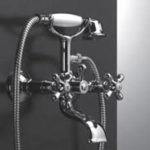This reflects the fact that Walmart is a big-box retailer with its many stores and online fulfillment centers stocked with thousands of items ready for sale. This is matched on the liabilities side by $55.2 billion in accounts payable, likely money owed to the vendors and suppliers of many of those Accounting vs Law: Whats the Difference? goods. These are the financial obligations a company owes to outside parties. Within each section, the assets and liabilities sections of the balance sheet are organized by how current the account is. So for the asset side, the accounts are classified typically from most liquid to least liquid.
- Shareholder equity is the money attributable to the owners of a business or its shareholders.
- Products, accounts and services are offered through different service models (for example, self-directed, full-service).
- The cash flow statement displays the change in cash per period, as well as the beginning and ending balance of cash.
- Shareholder equity is not directly related to a company’s market capitalization.
- You record the account name on the left side of the balance sheet and the cash value on the right.
Then cash inflows and outflows are calculated using changes in the balance sheet. The cash flow statement displays the change in cash per period, as well as the beginning and ending balance of cash. Line items in this section include common stocks, preferred stocks, share capital, treasury stocks, and retained earnings. Noncurrent assets are long-term investments that the company does not expect to convert into cash within a year or have a lifespan of more than one year.
Sample Balance Sheets
For the liabilities side, the accounts are organized from short- to long-term borrowings and other obligations. When a balance sheet is reviewed externally by someone interested in a company, it’s designed to give insight into what resources are available to a business and how they were financed. Based on this information, potential investors can decide whether it would be wise to invest in a company. Similarly, it’s possible to leverage the information in a balance sheet to calculate important metrics, such as liquidity, profitability, and debt-to-equity ratio. Because it summarizes a business’s finances, the balance sheet is also sometimes called the statement of financial position.
If you were to add up all of the resources a business owns (the assets) and subtract all of the claims from third parties (the liabilities), the residual leftover is the owners’ equity. Whether you’re a business owner, employee, or investor, understanding how to read and understand the information in a balance sheet is an essential financial accounting skill to have. Long-term assets (or non-current assets), on the other hand, are things you don’t plan to convert to cash within a year. When you start a business, you’ll often need to finance it with your own money. It’s important to capture this in the equity section of the balance sheet — even though it wouldn’t be considered the same as a loan from the bank.
OPEN AN ACCOUNT
These things might include short-term assets, such as cash and accounts receivable, inventories, or long-term assets such as property, plant, and equipment (PP&E). Likewise, its liabilities may include short-term obligations such as accounts payable to vendors, or long-term liabilities such as bank loans or corporate bonds issued by the company. A balance sheet is a financial statement that contains details of a company’s assets or liabilities at a specific point in time. It is one of the three core financial statements (income statement and cash flow statement being the other two) used for evaluating the performance of a business.
Shareholders’ equity is the portion of the business that is owned by the shareholders. It is important to understand that balance sheets only provide a snapshot of the financial position of a company at a specific point in time. It is helpful for business owners to prepare and review balance sheets in order to assess the financial health of their companies. Businesses should be wary of companies that have large discrepancies between their balance sheets and other financial statements. It may not provide a full snapshot of the financial health of a company without data from other financial statements.
Owner’s Equity/ Earnings
Current asset accounts include cash, accounts receivable, inventory, and prepaid expenses, while long-term asset accounts include long-term investments, fixed assets, and intangible assets. One thing to note is that just like in the accounting equation, total assets https://accounting-services.net/a-2023-guide-to-tax-returns-for-seed-stage/ equals total liabilities and equity. If you are preparing a balance sheet for one of your accounting homework problems and it doesn’t balance, something was input incorrectly. You’ll have to go back through the trial balance and T-accounts to find the error.
Depending on the company, the exact makeup of the inventory account will differ. For example, a manufacturing firm will carry a large number of raw materials, while a retail firm carries none. The makeup of a retailer’s inventory typically consists of goods purchased from manufacturers and wholesalers. Here’s everything you need to know about understanding a balance sheet, including what it is, the information it contains, why it’s so important, and the underlying mechanics of how it works. You can also compare your latest balance sheet to previous ones to examine how your finances have changed over time. Fill in this free balance sheet template in Excel to gain useful insight, and a more comprehensive overview of how your business is doing.
Great! The Financial Professional Will Get Back To You Soon.
Now that we have seen some sample balance sheets, we will describe each section of the balance sheet in detail. The current portion of longer-term borrowing, such as the latest interest payment on a 10-year loan, is also recorded as a current liability. Lastly, inventory represents the company’s raw materials, work-in-progress goods, and finished goods.
- These operating cycles can include receivables, payables, and inventory.
- This balance sheet also reports Apple’s liabilities and equity, each with its own section in the lower half of the report.
- A balance sheet is a financial document that you should work on calculating regularly.
- Often, the first place an investor or analyst will look is the income statement.
- A balance sheet is a financial statement that shows the relationship between assets, liabilities, and shareholders’ equity of a company at a specific point in time.
In order to get a more accurate understanding of the company, business owners and investors should review other financial statements, such as the income statement and cash flow statement. In order to get a complete understanding of the company, business owners and investors should review other financial statements, such as the income statement and cash flow statement. According to Generally Accepted Accounting Principles (GAAP), current assets must be listed separately from liabilities. Likewise, current liabilities must be represented separately from long-term liabilities.
How Do You Read a Balance Sheet?
You’ll get bank details for the US, UK, euro area, Poland, Australia and New Zealand, to receive fee-free payments from these regions. Hold 40+ different currencies, and switch between them using the mid-market exchange rate — and up to 3x cheaper than an alternative like PayPal. Kelly is an SMB Editor specializing in starting and marketing new ventures.
- That’s because a company has to pay for all the things it owns (assets) by either borrowing money (taking on liabilities) or taking it from investors (issuing shareholder equity).
- This may include accounts payables, rent and utility payments, current debts or notes payables, current portion of long-term debt, and other accrued expenses.
- The next section consists of non-current assets, which are described in the table below.
- Note that in our model, the “Total Assets” and “Total Liabilities” line items include the values of the “Total Current Assets” and “Total Current Liabilities”, respectively.
- Its liabilities (specifically, the long-term debt account) will also increase by $4,000, balancing the two sides of the equation.
- You will need to tally up all your assets of the company on the balance sheet as of that date.
























































































